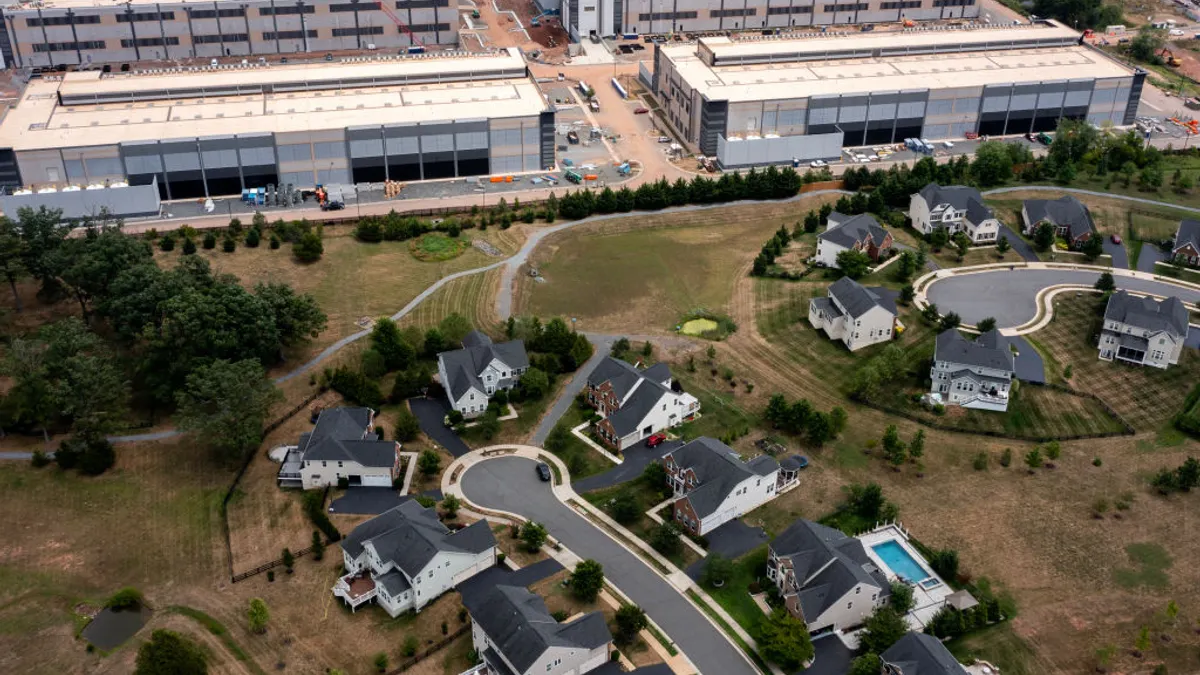Dive Brief:
-
Pacific Gas & Electric expects to file a rate case with its lowest requested rate increase in a decade as the company continues to make strides toward cutting costs and improving its credit rating, CEO Patti Poppe told investors during a Thursday earnings call.
-
Increased demand from prospective data center customers — which grew sharply — should help the company reduce residential rates, and PG&E does not expect to be heavily impacted by tariffs, according to Poppe.
-
Company leaders held up a recent rating upgrade by Moody's as proof of their progress, but cautioned that further improvements in the company's credit score are unlikely pending legislation to reform California's overwhelmed wildfire insurance fund.
Dive Insight:
With growing demand and possible legislative reforms in the works, Poppe expressed optimism about PG&E’s future even though the San Francisco-based company saw its first-quarter earnings decline slightly. Customers may remain skeptical of the company's ability to deliver, but PG&E is on a path toward lower costs and more modest electric bills, she said.
“We're interrupting a pattern here in California for affordability for customers,” she said. “We know our customers don't feel that yet, so there is a doubt that we can deliver on this but we are able to deliver, and we've delivered this year.”
The company's upcoming general rate case, which PG&E plans to initiate next month, will request the lowest increase in electric rates in a decade, Poppe said — and it doesn't include the effects of other potential cost-saving developments, including the improved credit rating by Moody's and growing electrical demand. PG&E's regulatory framework, Poppe said, should allow the company to cut overall customer bills by 1% to 2% for every gigawatt of new demand from data centers.
PG&E’s data center pipeline grew from 5.5 GW at the beginning of the year to 8.7 GW at the end of the first quarter, Poppe said. Most of the interest within PG&E's service area does not come from large AI-training data centers, but from more modestly sized, 100-MW range data centers that support existing AI applications for various companies, according to Poppe.
“These are a variety of smaller projects that will go through because that demand for compute power is real, particularly here in the Bay Area where we have this density of technical talent who can leverage AI,” Poppe said. “So this trend is absolutely real for us.”
The company also plans to cut costs by undergrounding power lines in regions where PG&E currently spends significant sums of money on vegetation management, and anticipates limited impacts from the recent spate of tariffs announced by the Trump administration. Most of the company's materials and supplies come from domestic sources, with the company’s biggest areas of tariff exposure coming from the purchase of computer hardware, smart grid equipment and other electric equipment like transformers, according to Carolyn Burke, chief financial officer for PG&E.
Poppe indicated that company leaders have been working with state lawmakers on a solution to shore up the state's wildfire fund, which insures participating utilities, including PG&E, against catastrophic wildfire losses. Frequent, severe wildfires, including the Eaton Fire in Los Angeles County earlier this year, have strained the fund's financial resources.
Poppe said she was unable to share details of what a solution could look like, but told investors that she has continued to emphasize the importance of a financing plan that does not require contributions from the utility's investors. Access to low-cost capital, she said, remains critical to affordable electric rates.
In the meantime, PG&E is conducting a review of its de-energized and deactivated electric lines to ensure they haven't overlooked the possibility they could start a wildfire in light of recent allegations that an idled power line owned by Southern California Edison may have sparked the Eaton Fire, Poppe said.
Given rising consumer costs and recession fears, Poppe said it was essential for the company to continue to make the case that investments in initiatives such as undergrounding power lines will lead to lower power bills in the long-run.
“When the Legislature is looking at all this simultaneously, it's pretty hard to absorb all of it at once,” she said. “So it's important that we continue ... an active conversation and make sure that we're sharing the information that we have and continuing to demonstrate that we don't have to choose between customers and investors.”













